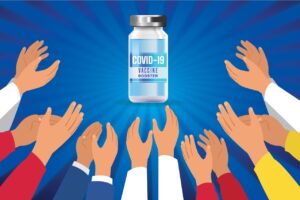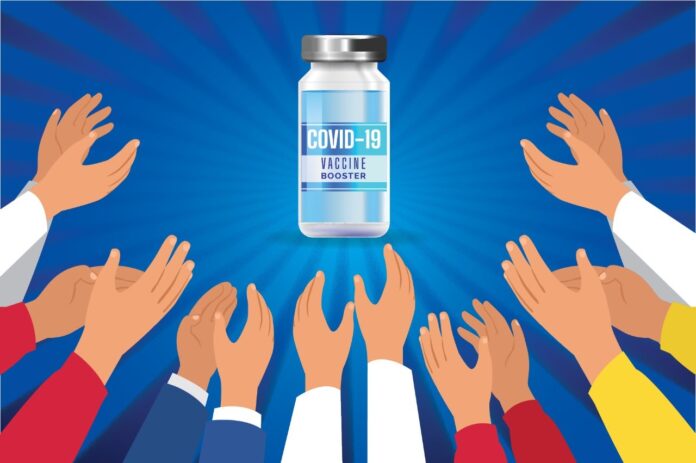 Prof G V S Murthy, Director, Indian Institute of Public Health-Hyderabad talks about the need for booster doses, focus on primary vaccination and dealing with Omicron variant to Kaniza Garari, Senior Assistant Editor at IndiGlobal Media Network
Prof G V S Murthy, Director, Indian Institute of Public Health-Hyderabad talks about the need for booster doses, focus on primary vaccination and dealing with Omicron variant to Kaniza Garari, Senior Assistant Editor at IndiGlobal Media Network
Q1. What is a booster dose and which vaccinated population group requires it?
Vaccination is normally done in two phases. The first phase is called ‘primary immunization’. This is when somebody who has not been infected with a virus or bacteria causing disease is given a course of vaccines (in most cases 1-2 spaced doses) to protect them and increase their defence to fight the disease. For some diseases, a single dose confers life-long protection (immunity) while for other diseases, the protective effect decreases over time and therefore a ‘booster’ is required to enhance protection. Unlike the primary immunization where the body takes a couple of weeks to develop the protective capacity, with a booster the protection is immediately enhanced from within 24-48 hours itself.
COVID vaccines fall in the 2 nd category where the protective levels wane off in 6-9 months and therefore a booster is required. This will immediately enhance the protection against COVID 19 waves, provided that the booster is effective against the specific strain driving the wave.
In the first round, boosters should be available in the same order of prioritization as in the primary vaccination in 2021. The health care workers, other frontline workers, the elderly, people with co-morbidities and people with disabilities should have priority for a booster dose.
Q2. Apart from healthcare workers do the other emergency workers like police, traffic and government employees also need it?
Yes, all the emergency workers are also at high risk of infection and should be covered with a booster as they can drive a new wave as they come into contact with a large number of people in the community. These include police, field based government staff like Anganwadi Workers, postal services, bank and postal department personnel along with public transport providers. School teachers and school support staff should also be considered as critical human resources so that education is not compromised.
Q3. Will the booster dose be of the existing companies selling their vaccines in India or do they need to be imported?
The existing vaccines available in the country can be successfully used for booster doses. Available indications are that Serum Institute of India is cutting back on production by nearly 50%. If the government takes a clear-cut decision allowing boosters, full production may start in the country itself and there would be no need to import. Some evidence currently available suggests that mixing two different types of vaccines may optimize the protective effect. If the government directive is to this effect, then mRNA vaccines which are not currently available in India can be imported if COVAXIN supplies cannot be firmed up further.
 Q4. How much population in India is yet to take the first dose of vaccine and how many are to opt for the second dose?
Q4. How much population in India is yet to take the first dose of vaccine and how many are to opt for the second dose?
Will they not taking the required vaccine provide the required protection to those who have taken booster doses? As of now, 60% of the Indian adult population have received one dose and 40% are fully immunized with two doses. Though there is some level of vaccine hesitancy, we see much lower levels of this in India compared to many high-income countries. With most infectious diseases we find that if 80-85% of the eligible population is vaccinated, it reduces the transmission potential of the infection. However, it does not mean that the remaining 15-20% get protected even if they do not get vaccinated. On the contrary, they may have worse outcomes if they catch the infection. Similar dynamics will apply to COVID too. At the moment robust data on what level of the population needs to be fully vaccinated to reduce the transmission is not clear, though many believe that 70% fully vaccinated will slow transmissibility significantly. But it does not protect the unvaccinated. It may only reduce the chance of getting infected by a small proportion. Therefore each individual should strive to get vaccinated. The new variant like OMICRON is reinfecting those previously infected and those vaccinated too. Therefore the only option of reducing this likelihood is taking a booster dose, though it is not clear whether this is going to protect against the new variant(s).
Q5. What is the emerging evidence of booster doses in other countries? Is it helping as Omicron variant of SARS-Cov2 spreads?
Most high-income countries have started booster immunization of all adult populations now. It was first offered to the elderly but with the increasing spread of OMICRON variant, the age cut off has been relaxed. Though break through infections have been reported both among those infected earlier and those vaccinated, mortality and hospitalization in these groups has been significantly lower than among the unvaccinated.
Q6. What must be the model that India must adopt in terms of vaccination, booster doses as the Omicron spreads and there is a reluctance to opt for vaccination?
The Indian program should work on both fronts – Increasing the uptake of primary vaccination and offer booster doses to those who are at higher risk of hospitalization and mortality. The Government should continue to support the cost of primary immunization and the boosters for the high-risk poor populations, but for boosters of high-risk populations who can afford to pay for the vaccine should be allowed to pay and access the same from private agencies. Today, there are sufficient stocks manufactured in the country and therefore such an approach should be considered. One thing for sure is that the focus on primary immunization should continue unhindered and not get derailed due to the clamour of booster doses.
Q7. Does the country need to review the gap in two doses of Covisheild vaccine?
Reducing the gap between two doses of COVISHEILD to 4-6 weeks will not help in increasing vaccine efficacy as has been seen from a number of studies. Studies in the UK have shown the best immune response when doses were given 8-12 weeks apart. In the face of the OMICRON onslaught, it may seem tempting to reduce the gap to around 8 weeks. But before such a step is contemplated, evidence should be collected on the protective efficacy of COVISHIELD against the OMICRON variant. The best alternative would be to enforce COVID appropriate behavior immediately coupled with at least one dose of any available vaccine being distributed quickly.








